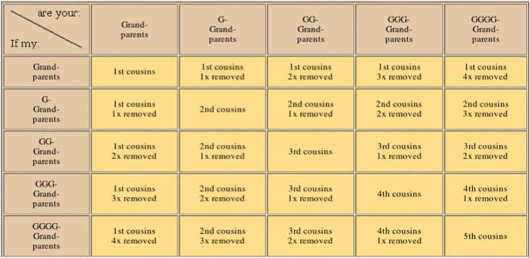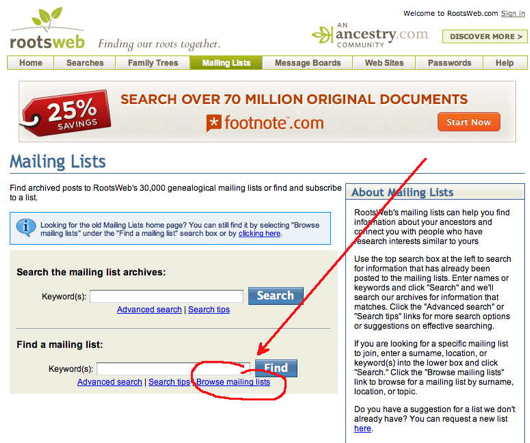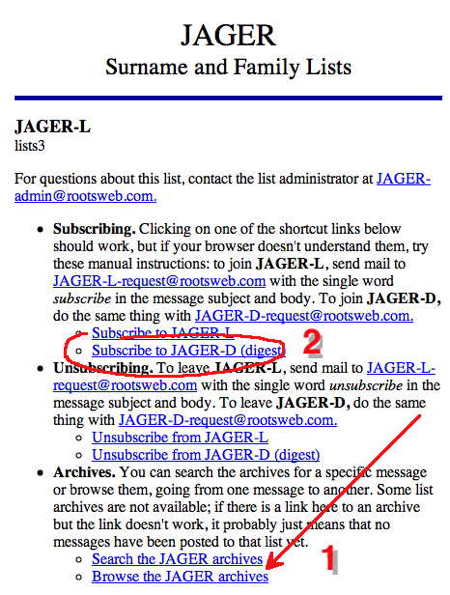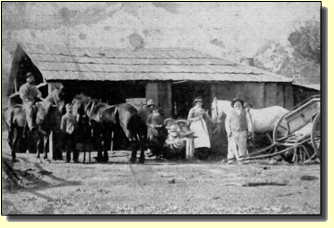You
are receiving this because your address is subscribed at: www.jaunay.com/newsletter.html |
|
 |
| No: 59 |
January 2011
|
|
News January Seminars No program February Seminars 20: Coming to grips with FamilySearch, WEA Centre Adelaide, 10:00am to 1:00pm See the seminar program for more details and bookings. Closure Adelaide Proformat's office is closed from 11 Dec until 27 January. Finding cousins A successful family historian follows two strategies to facilitate a successful research program. Following the paper trail is a significant one but this article addresses the other, often more important research avenue. In pursuing cousins, a researcher is opening up new avenues of information. We all descend from individuals in a multitude of families and some of those individuals, simply because of their circumstances, may have become custodians of family knowledge and/or artifacts that they in their turn passed on to one of their family and so on down to the present. It is therefore quite possible, even probable, that a distant cousin may hold this knowledge or artifacts. In fact the more remote your cousin is the greater the chance they hold the information you seek! So finding your elusive cousins is the key to successful family history researching… but the question is: Who are your cousins? There are tables to help you through this dilemma but it is really quite simple. To determine a relationship between two persons involves counting the great/grands in the relationships between the common ancestor and the cousins. To do this: 1. find the common ancestor and determine the relationship of that person to each person under consideration. 2. if the person under consideration is in the same generation, you count the great/grands in the relationship to the ancestor. Therefore if the two share a great great grandfather (three greats/grand) they are third cousins. 3. if the cousins are in different generations, then you have a "removed" situation. You again count the great/grands in the relationship to the common ancestor. • The lower number of great/grands is the type of cousin. • The difference between the two great/grands count is the removed number. Therefore in relation to the one ancestor if one person under consideration is a great great grandchild (three greats/grand) and the other is a grandchild (one great/grand)—the lower number is one and therefore they are first cousins and the difference between the pair is two and thus they are first cousins twice removed. |
In
this issue: |
|
Adelaide
Proformat Services
• Research |
| If that proved too confusing then here is a simple chart…  Some clarifications are needed: 1. Half cousins are persons who share only one of the ancestor couple. 2. Spouses are related only by marriage and not by kinship. 3. If there are no great/grands in one of the relationships, you have an aunt/uncle or nephew/niece relationship.  How
do you find your elusive cousins? How
do you find your elusive cousins?You need to advertise your interests widely using family history media, family history society magazines, commercial journals, and name lists on the web including mail lists. LostCousins LostCousins works to bring people together who share the same ancestors. This site compares information entered by visitors about their ancestors and compares it with information entered by other members. The matching process is based on 1881 censuses of England, Wales and Scotland and while further additions are promised currently many of us may be locked out because they have no links into the 1881 Census, Visitors can register on the site for free. They do not put people in touch with each other without the consent of both parties. They also explain that the more names you enter, the better your chances. The 1881 Census has errors and so LostCousins have provided an Index of Incorrect Surnames compiled by members who have already searched for names. There is also an Index of Maiden Names from the same census. Genes reunited Genes Reunited has developed out of the Friends Reunited web site and already lists over 58 million people. It is a free site and if you register you can use it as a host for your personal Family Tree or GEDCOM site. Genes Reunited is owned by ITV and also manages the 1901 census site on behalf of The National Archives. Genes Connected is also associated with this site. Register your details and start to build your own family tree. The site managers work hard to ensure all material presented is from genuine family historians. Recently the author received a posting from a malicious user with a false profile from their site and on advice, the material was pulled from the web site with 24 hours and all recipients of the material had been advised accordingly by replacing any existing messages sent by this person in members' mailboxes with some red text to explain that this was a false profile. Online names Adelaide Proformat was the very first to have an online surname listing here in Australia. The site started in January 1995 and has continued ever since. It now covers Australasia, UK & Ireland supported by GENUKI, North America and the former British colonies in southern Africa. Although struggling to compete against subscription sites, the site remains completely free of charge and with no advertising. Australian Family Tree Connections For many years, the leading family history magazine for all Australia has maintained surname interest listings for Australian readers and a full summary can be seen at their web site. Just click on the link Surnames at the top left. Rootsweb Mail Lists The author numbers the Rootsweb site as one of the top sites to assist in progressing family trees and the part of that site that is most useful in this pursuit is the mail list section. It is an easy process to follow. Step 1: Locate the Mailing List button in the menu as illustrated below.  2. When the new page opens for the first time, ignore all the material and go straight to the browse link as marked below.  Step 3: The new page lists all the topics covered by Rootsweb mail lists and for this exercise you want the Surnames section which is clearly labelled. Locate the surname mail list of interest to you and browse (see 1 on the illustration below) to see if anything of interest to your research has already been posted. If you want to respond then you need to subscribe. Even if you find nothing then a subscription and posting your interests may produce positive results. Opt for the digest version (marked 2 on the illustration below) rather than the email version as you will get far fewer emails and the digest version has a useful summary. If and when you wish to move on, unsubscribing is equally simple. 
 Once
you find a cousin what do you do next? Once
you find a cousin what do you do next?If you initiate the contact with a remote member of your family then you need to observe some etiquette. • be diplomatic. • seek permission to use material of a private nature. • use email or letters rather than the telephone or fax. • communicate in the recipient’s language. How to do this will be the topic of a future newsletter. • ensure the following when writing... - introduce yourself. - be tactful when asking questions. - resist asking for too much information in your first letter. - pay for return postage - an incentive for a reply. - offer to pay for out-of-pocket expenses - prepare a set of specific questions in a form that requires minimal effort by the respondent. What if a cousin finds you? In dealing with people you need to recognise that they may have their own agenda. Apart from misunderstandings and/or poor memories… your family informant may be influenced by: • the need to retain some respectability. • the desire to remain youthful. • a tradition or myth passed down through the years. • a yearning to be associated with the famous. • a lack of understanding of historical context. Family history is a major endeavour and should not be undertaken lightly. Many pursuing their own family history lack the skills required to be effective researchers. These very same people seem to hold the skills to ensure their findings get onto the Web and into other publications. Therefore pursuing your own family history demands objectivity and a preparedness on your part to accept less than pleasing or accurate information. Many researchers are not sufficiently detached from their subject. Consequently much data you will find lacks credibility and most will have no sourcing or supporting information and therefore you should confirm all the information you receive. The basic principles one should observe in this aspect of research are:
|
|
| To
unsubscribe send a blank email via the following link using the same
address you subscribed to: newsletter-leave@jaunay.com |

 •
Never assume anything.
•
Never assume anything.